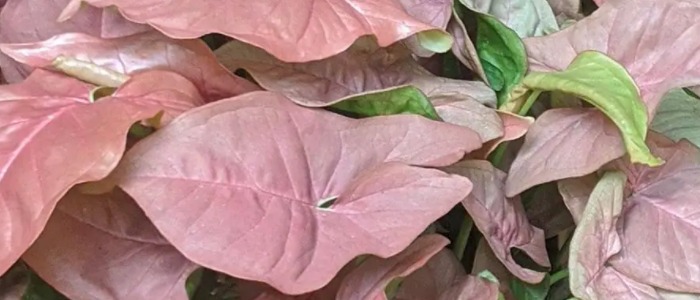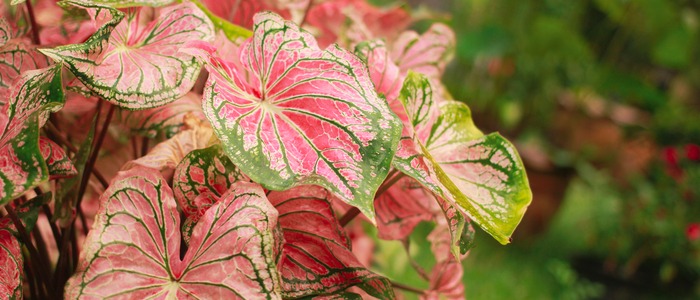Thinking of getting a calico kitten plant? Well, with its heart-shaped leaves that are marked by colors of green, creamy white, and rosy pink, this pretty succulent is indeed a beautiful addition to your home. Especially who doesn’t love the white dainty little flowers that bloom during the spring season? Not to mention this plant is easy to grow and take care of indoors. And that’s not all. The calico kitten plant (Crassula pellucida) looks great in hanging baskets as well as rock gardens. What more reasons could one possibly want to get this plant?
The leaves of the plant are one of the reasons why this plant is so popular. From yellow to pale green to shades of green and different hues of cream and pink, they are absolutely stunning to look at. That’s not all the leaves of the calico kitten change color; it can change its color to hues of purple and fuchsia and deep purple when the plant becomes very dry. The plant trail looks great when hanging from tall planters or baskets. The cheerful little flowers are also truly beautiful. That being said, if you are really intrigued by this plant and thinking of getting one read on to learn more about this plant.
Calico Kitten Plant Frequently Asked Questions
How much sun does a calico kitten plant need?
The calico kitten plant needs partial and bright sunlight for proper healthy growth when kept outdoors. This plant can also thrive well when kept under the full sun, but you need to be careful about it, or else the leaves might get scorched in the sun.
Can you propagate a calico kitten through leaves?
This plant can be propagated through either stem cuttings or leaves. To propagate through leaves gently and slowly pull off a couple of plump and nice leaves from the original plant by twisting them slowly from the stem. Once the leaves become completely dry, stick the ends on well-drained soil.

Calico Kitten Plant Care
The calico kitten plant has originated from South Africa, and taking care of this plant might seem like a tricky task, especially in the beginning. But worry not cause these plants to tend to harden with proper care and time. Although initially, the plant might need time to grow, it picks up its pace fast enough in later stages. Also, one more thing to remember about the calico kitten is that it is a low-growing plant that is they won’t grow tall. Instead, they usually spill over the edges of the container.
- Light Requirements: This plant can grow both indoors and outdoors. In case you are placing the plant indoors, make sure it is by an east-facing window where the plant will get plenty of sunlight. West or south-facing windows also might do the job. In summers, if you feel like the plant might get scorched because of the burning rays of the sun, then try adjusting the position of the plant by moving the plant around. Remember your plant needs at least 6 hours of bright sunlight every day.
The calico kitten plant needs partial and bright sunlight for proper healthy growth when kept outdoors. This plant can also thrive well when kept under the full sun, but you need to be careful about it, or else the leaves might get scorched in the sun. But before keeping the plant outdoors, make sure you assimilate this plant slowly to the harsh sunlight. Also, keep in mind even if the plant is fully assimilated to the full sunlight, it might still get burnt during an intense heatwave. So, if you live in a hot tropical climate, invest in some sunshades for your plants.
- Soil Requirements: This plant, like most other succulent plants, needs well-drained soil. The right soil accompanied with proper regular watering will ensure a healthy, thriving plant. You can also use a mix of perlite and cactus potting mix for some added drainage. Just make sure that the proportion of perlite to the cactus potting mix be 1:2. Sandy soil is another great option that is derived from mixing coarse sand or potting soil with the cactus mix.
- Water Requirements: The calico kitten is capable of storing water in the leaves. This is why you need to make sure you don’t overwater these plants. Overwatering can lead to the common killer root rot, which kills most houseplants. You can water the plant once every other week during summer, spring, and fall. Just keep in mind at the end of the day, watering the plant depends on how much sunlight the plants have been receiving.
During winters, you can water this plant once a month only or when you feel the plant looks thirsty. Ensure that you are not overwatering this plant, especially if your container doesn’t have a drainage hole. In case your succulent is outdoors, make sure you water them every couple of days, especially in the summers.
- Temperature Requirements: The calico kitten plant can tolerate freezing temperatures and mild frost, provided you don’t leave them out in the cold for a long time. But if you live in places that have severe winter conditions, the ideal way to grow this plant is in pots or containers. This way, you will be able to bring the containers inside if the outside weather becomes too harsh. If you are unable to bring your plants inside, you can always opt for mini-greenhouses or frost cloths to survive the winter.
Propagating The Calico Kitten Plant
The calico kitten plant is not only a delightful succulent to have around your home but also is easy to propagate. This makes it the perfect gift for your families and friends. This plant can be propagated through either stem cuttings or leaves. Propagating through leaves might seem like a difficult and tedious task, but nonetheless, you can do it the following way:
Propagating Through Stem Cuttings:
- Using a clean, sharp knife, snip a single strand from your original plant.
- Fill the container with well-drained soil while leaving almost an inch on the top.
- Lay the cuttings over the soil while pressing in gently; add some more soil to cover it up, making sure that only the leaves are peeking out.
Start watering the cuttings when they have started rooting with the soil, which will be around 6 weeks.
Propagating Through Leaves:
- Gently and slowly pull off a couple of plump and nice leaves from the original plant by twisting them slowly from the stem.
- If you want to speed up the process of propagating through leaves, then dip the ends of the leaves in some rooting hormone.
- The leaves should be kept away from direct light in a dry area for a couple of days.
- Once the leaves become completely dry, stick the ends on well-drained soil.
This process of propagation is time-consuming and can take weeks to sometimes even months to become completely established. But the roots will start emerging around 2 weeks, and new plants will start emerging after a couple more weeks.













